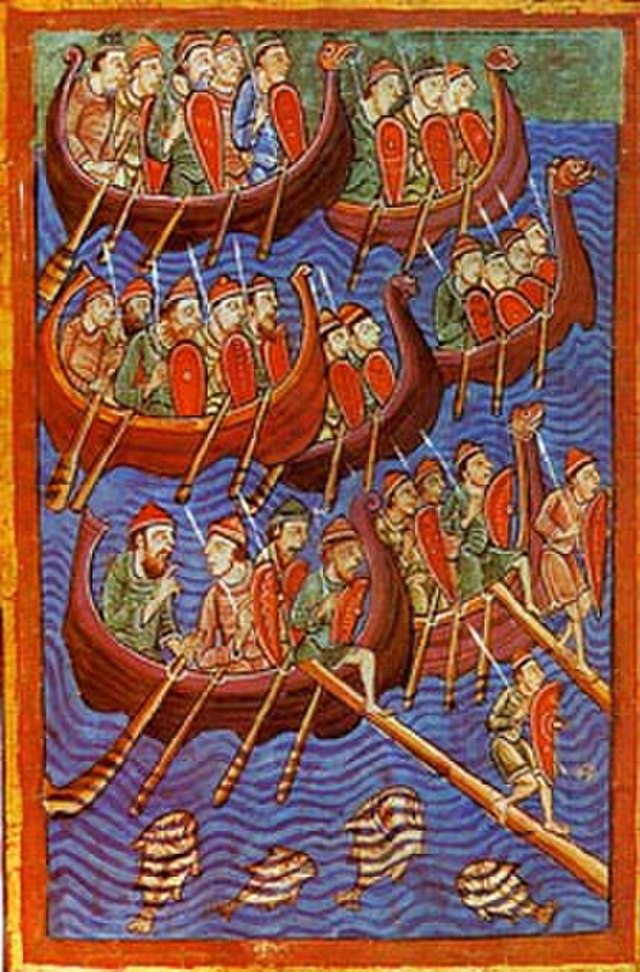The stones of the sun
An ingenious Viking navigation method

Medieval illustration of the Great Danish Army aboard the Viking longships - Wikicommons
One of the Vikings' secrets to navigation, beyond their well-known shipbuilding skills, was their frequent use of sunstones (Old Norse: sólarsteinn, or heliolite) during their sea voyages. These were pure, transparent calcite crystals that, when pointed toward the sun—even in foggy or stormy conditions—could polarize and reflect sunlight (or the minimal light filtering through bad weather), allowing them to determine the sun’s position with remarkable accuracy (within about one degree). This method even worked up to 40 minutes after sunset.
This "mystical" mineral was abundant in Iceland and Germany during the 13th and 14th centuries. As a result, it was not only used for navigation but also incorporated into the construction and restoration of churches and monasteries in those regions. The use of sunstones is mentioned in the *Rauðúlfs þáttr*, an Icelandic allegorical tale from the 11th century, written by a monk who recounts King Olaf "the Holy" meeting the sons of a wise man named Rauðúlfur ("Red Wolf" in Old Norse):
"The weather was dense and snowy […]. The king then summoned Sigurður and Dagur (Rauðúlfur’s sons). The king observed the people around him and saw that no one could locate a clear sky. He then asked Sigurður to indicate where the sun was at that moment, and Sigurður gave a confident answer. The king then took the sunstone from Sigurður and Dagur, raised it, and saw where the light radiated from the stone, thus verifying the correct course"
Essentially, King Olaf utilized the birefringent properties of calcite, which splits sunlight into two distinct rays as it passes through the stone. By following the primary ray’s origin, sailors could pinpoint the sun’s exact location and use it as a reference to adjust their course accordingly.
The use of sunstones allowed the Vikings to navigate open seas even under adverse conditions, enabling them to reach Sicily, England, the treacherous waters of the North Sea, and even the Americas—where they engaged in both trade and conquest.
2025-09-28
Salvatore Ciccarello
